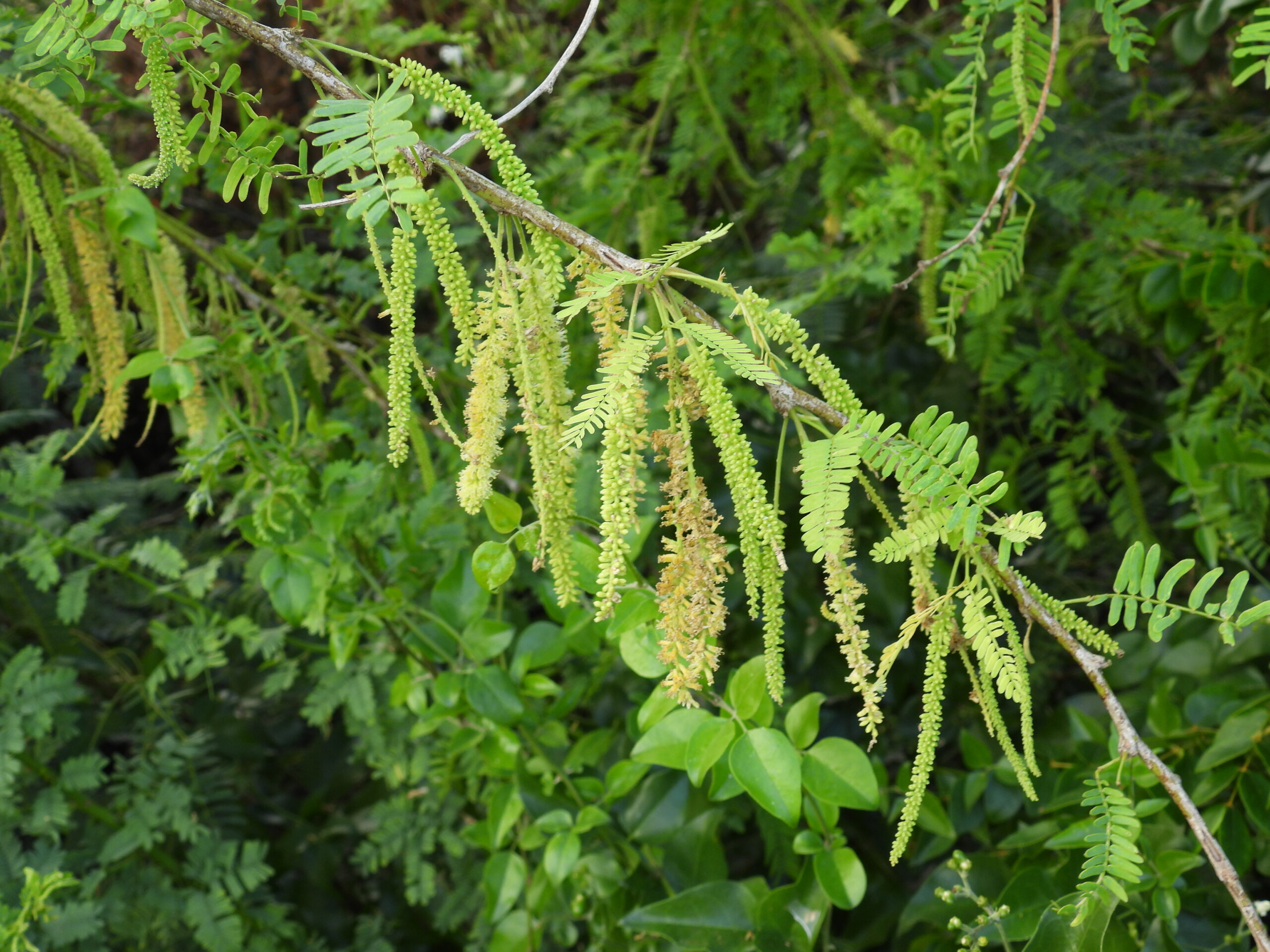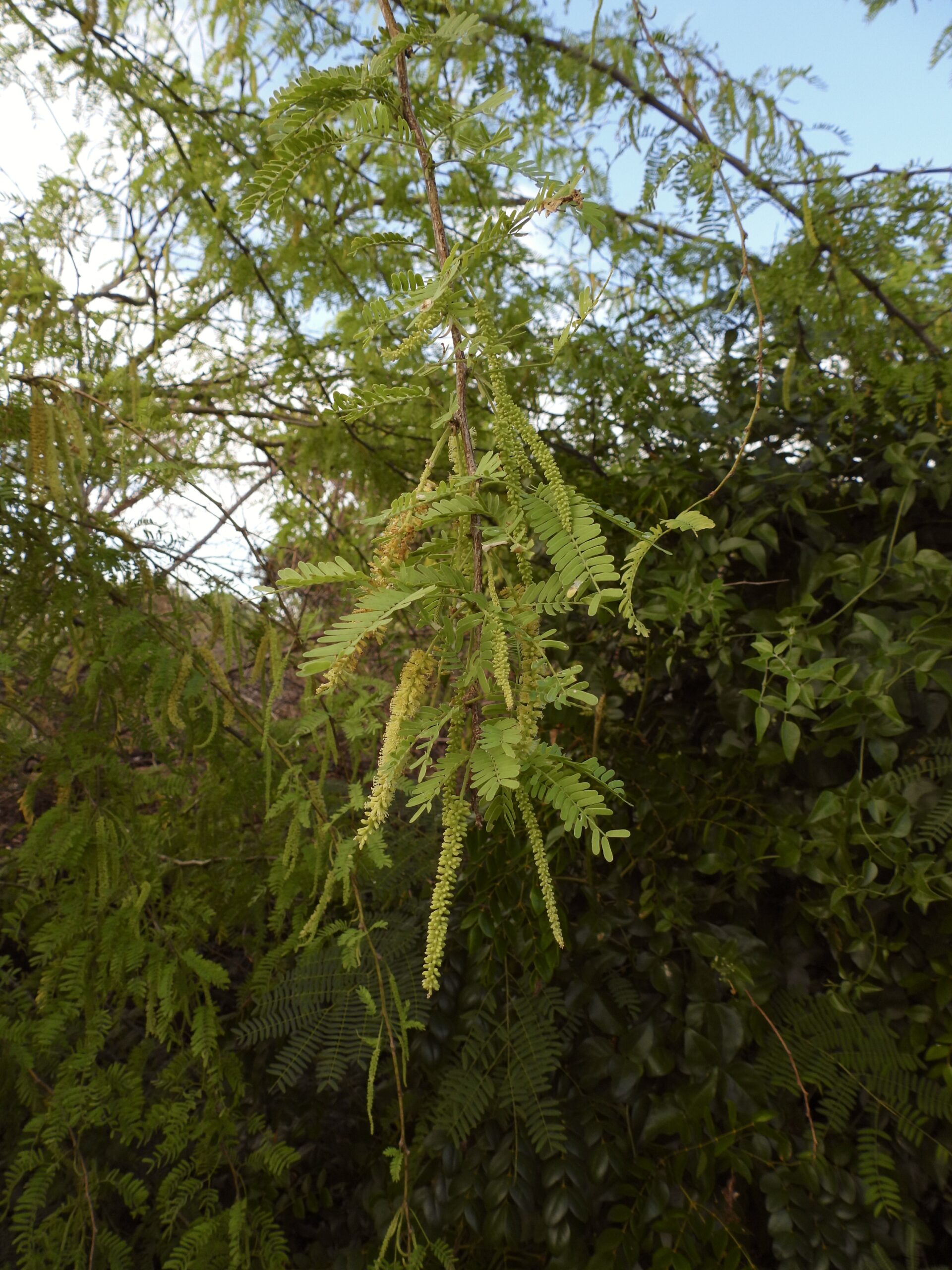Habit: Neltuma juliflora grows as a deciduous, medium to large size tree up to 20 m. in height and up to 60 cm. in diameter. The bipinnately compound leaves are arranged alternately, to 25 cm in length, and with 3-5 pinnae each with 12 – 20, sessile leaflets. Each oblong leaflet is to 2 cm in length with a rounded/mucronate leaf apex. There are stipular spines and a round center depressed gland between the lower 2 pinnae.
The slightly zygomorphic, complete, perfect flowers are arranged in axillary spikes to 15 cm in length. The calyx has 5 green, unfused sepals. The corolla has 5 light yellow unfused petals. There are 10 unfused stamens only slightly longer than the petals. The ovary is superior with a single locule. The fruit is a flattened legume to 20 cm in length. The seeds are yellow/brown and embedded in a white pulp.
Habitat: Neltuma juliflora grows in Human Altered environments (roadsides, yards) in the Lucayan Archipelago. In its native habitat in occurs in Dry Broadleaf Evergreen Formations – Forests/Shrublands.
Distribution: Neltuma juliflora is NOT native to the Lucayan Archipelago. It has spread on Great Inagua in and surrounding Matthew Town.
It is native to Mexico, South and Central America and the Antilles. It has become wide spread throughout tropical and subtropical areas of the world. In many places it is considered an INVASIVE species.
Medicinal/Cultural/Economic usage: Neltuma juliflora is not known to be used medicinally in The Bahamas.
The pulp is edible and slightly sweet.

